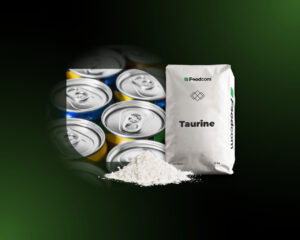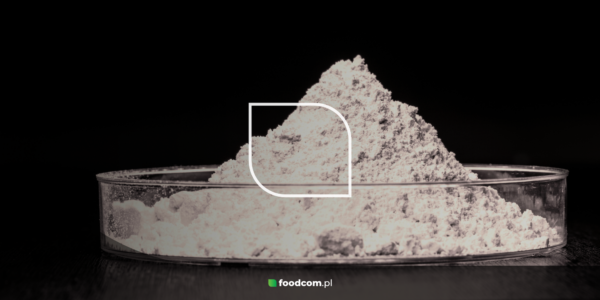- Prices for monocalcium phosphate are anticipated to rise in July due to increased costs of phosphoric acid and global freight volatility.
- Market analyses predict a 15-20% price increase for citric acid in July 2024 driven by global supply chain disruptions and higher production costs.
- China recorded its highest first-half thermal coal imports in history, but a potential slowdown in imports is expected as domestic production ramps up and shifts towards hydropower and renewables.
Hello Partners!
Welcome back to our Newsletter!
The global nutraceutical market is facing major challenges, as important vitamins such as D3, E and Biotin are subject to dramatic price fluctuations. Vitamin D3 prices are soaring in China, disrupting supply chains worldwide, while the global Vitamin E market is struggling with supply chain disruptions and rising production costs. Meanwhile, Biotin prices in Europe continue to fall due to weak demand and the economic slowdown in key markets. Find out how these changes could alter the future of supplements in this comprehensive overview.
Let’s take a look at what else is happening on the market!
Products of the Week!
Vitamin D3
The nutraceutical industry is experiencing significant disruption as vitamin D3 prices in China are soaring with a 2% weekly increase and a projected 3% monthly increase. This increase is due to critically low stock levels and strong global demand, particularly from Western markets. The resulting price increases are causing significant disruption in the supply chain, increasing production costs and leading to longer delivery times.The coming months will be crucial in determining the long-term impact of this price increase on the global dietary supplements market.
Vitamin E
The global vitamin E market experienced significant fluctuations in 2024. From mid-2024, the market experienced a sharp increase in prices due to supply chain disruptions, particularly due to incidents such as the explosion at the BASF plant in Ludwigshafen. This incident, combined with ongoing logistical challenges and rising production costs, put pressure on vitamin E prices worldwide. In regions such as Asia and the Pacific, vitamin E prices fluctuated due to inconsistent supply and demand dynamics, while European markets struggled with sufficient stock levels, leading to a temporary decline at the beginning of the year. However, the market remains volatile and potential price increases are expected as suppliers adjust to the changing situation.
Biotin
In July 2024, Biotin prices in Europe continued to fall, driven by weak demand from key industries and ample supply. Sellers responded by lowering prices to reduce their inventories, exacerbating the downward trend. The economic downturn in China, a major exporter of biotin, also contributed to the price decline as lower domestic demand and price cuts spilled over to Europe. In addition, improved shipping conditions and lower freight rates eased the pressure on the supply chain, contributing to the price reduction. The economic difficulties in France and Germany, which are characterized by declining business confidence, also played a role in the drop in demand. Analysts expect Biotin prices to fall further in the coming months due to continued weak demand and general economic challenges.
Co jeszcze?
BASF plant explosion threatens global Vitamin supply
An explosion and fire at BASF’s Ludwigshafen plant on 29 July 2024, caused by an organic solvent leak, led to the closure of the affected area. Although no environmental contamination was found, the incident is expected to disrupt the production of key chemicals, including vitamins A and E, and potentially affect global supplies. BASF has partially restored access to the plant, but warns of delays in the value chain for vitamins E and A. Uncertainty in the market is high and prices for these vitamins could increase by 30-60% as suppliers await further information.
Taurine prices rise on the US market
In July 2024, taurine prices on the US market recorded a significant increase, reversing the downward trend of the previous month. The increase was caused by rising demand from end consumers, higher transportation costs and a restricted supply chain. Contributing to the price increase was an unexpected rise in the cost of ethylene oxide in the Chinese market, which, together with a slowdown in production and difficult weather conditions, reduced the supply of taurine. The supply chain disruption in China also impacted the US market. Transportation problems, such as rerouted ships and higher surcharges during the peak season, also drove up costs. In view of strong consumer demand and possible interest rate cuts, taurine prices are likely to rise further.
PLA market stability in the Netherlands
At the beginning of August 2024, prices for polylactic acid (PLA) in the Netherlands remained stable. With the use of Luminy® PLA at the 2024 Olympic Games in Paris, the Netherlands has demonstrated its commitment to environmentally friendly practices. Going forward, the PLA market is expected to remain stable, although increasing demand for biodegradable materials could drive prices up. Seasonal fluctuations could tighten supply in September, but prices could fall towards the end of the year. Currently, PLA prices are stable at USD 2,350/MT.
![Additives focus: market movements and sustainability news [56th Edition Foodcom ADDITIVES Newsletter] Additives focus: market movements and sustainability news [56th Edition Foodcom ADDITIVES Newsletter]](https://foodcom.pl/wp-content/uploads/2024/06/Foodcom_SA_Additives_Newsletter_Amino_Acids-1520x760.jpg)






